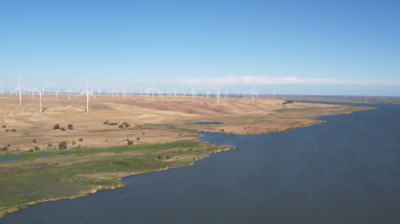New Report: Housing Crisis Threatens CA Climate Change Goals
California’s epic housing crisis is hurting more than lower- and middle-income working families struggling to find housing they can afford. It’s also threatening to derail landmark greenhouse gas reduction laws that for a decade have made California a global leader in the battle against climate change, according to a white paper released today by the Bay Area Council Economic Institute.
The report – Another Inconvenient Truth – finds that a raft of regulatory and community barriers is blocking new urban infill housing near transit and job centers, forcing large and growing numbers of workers and others to commute longer and longer distances in exhaust-spewing automobiles. More than 100,000 Bay Area megacommuters travel 90 minutes or more every day to reach their jobs, contributing to a 78 percent increase since 1990 in the number of megacommuters crossing county and regional boundaries to get to work.
“The math is simple. Without more housing near urban centers and jobs, California can’t achieve its historic climate change goals,” said Micah Weinberg, President of the Bay Area Council Economic Institute. “Fortunately, the tools are available to change this equation if the political will exists to follow through on the state’s commitments. California has made great strides in addressing climate change and has shown tremendous resolve in doing the difficult things necessary to reduce carbon emissions. There’s no reason we can’t do the same thing with housing.”
The report offers 10 strategies for addressing the problem, including adopting a so-called “right to build” proposal by Gov. Jerry Brown that would fast track urban infill housing projects that include a percentage of units that are affordable for lower- and middle-income residents. The legislation has met with withering opposition from labor groups that see it as a threat to their ability to press home builders for higher wages.
With automobiles accounting for a significant portion of California’s overall greenhouse gas emissions, reducing commutes is one of the key strategies for meeting the state’s climate change goals. However, the report cites California Air Resources Board data that shows California failed to meet recent emissions reduction targets and is far off track in hitting ongoing annual targets needed to reach the state’s overall 2050 climate change goals.
To reduce commutes, metropolitan regions like the Bay Area were charged under state climate change policies with putting a majority of new housing in urban infill locations near transit and job centers known as priority development areas (PDAs). In the Bay Area, regional planners working with local communities identified 200 PDAs where 80 percent of the region’s new housing could be placed.
However, the Economic Institute report found that the Bay Area has come up well short of that goal, placing just 54 percent of new housing in PDAs. The problem is compounded by the fact that large metropolitan regions across the state like the Bay Area, including Los Angeles and San Diego, have failed over many decades to meet ongoing demand for new housing. In 2015, the Bay Area added 133,000 jobs but only 16,000 new housing units.
This ongoing shortage has pushed rents and home prices to the stratosphere – four of the Bay Area’s nine counties have registered median home prices above $1 million — and pushed a growing number of commuters to find less expensive housing further from their jobs in places like the Central Valley and Sacramento. Of the nearly 200,000 commuters crossing regional boundaries in 2013, the report found, 69 percent were commuting into the Bay Area for work. With higher housing costs taking a bigger and bigger bite out of household income, the state’s housing shortage also is cited as a primary driver of California’s nation-leading poverty rate.
There a number of key reasons that regions like the Bay Area haven’t kept pace with housing demand, according to the report, particularly for lower- and middle-income households. Myriad land use and zoning regulations drive up land costs, making almost any form of affordable housing infeasible without massive public subsidies. Local resistance to new housing is also a major factor, with opponents often abusing state environment laws to delay or stop projects. Onerous local fees on new housing can also add tens of thousands of dollars to each new housing unit.
The report identifies 10 strategies for addressing the problems, among them:
- Adopting “right to build” legislation that fast tracks urban infill housing projects that include a guaranteed level of affordable units.
- Giving cities incentives to meet their housing obligations.
- Easing restrictions on creating second units.
- Changing state fiscal policy to prioritize residential development.





